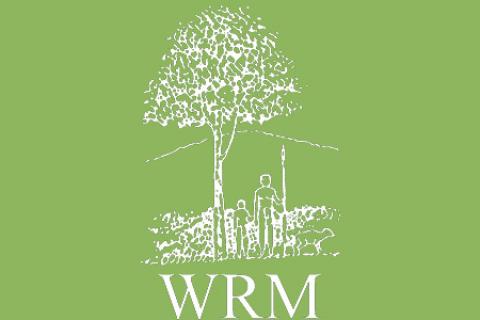Forestry scientists working on GM trees often point to the number of field trials of GM trees worldwide as evidence that the technology is increasingly accepted. In fact the reverse is true. As the number of experiments increases so does the strength of the resistance against GM trees.
Bulletin articles
GM trees are not a result of evolution. They are the result of decisions taken at institutional and corporate levels for their development and deployment. Companies, research institutions and universities work together closely on this. Companies fund university research departments, and influence what type of research is carried out.
In spite of the risks posed by genetic modification of trees, there is no international legislation specifically relating to GM trees. Instead, legislation has been produced with GM food crops and seeds in mind, and does not necessarily cover the problems presented by long-lived GM plants such as trees.
International law covering GMOs is at present focussed on issues relating to trade. There are two institutions which provide rulings covering international trade in GMOs: the Convention on Biological Diversity (CBD) and the World Trade Organisation (WTO).
On October 22, 2004 Russia ratified the Kyoto Protocol, the international agreement created to begin addressing the problem of global warming. Russia’s ratification of the Kyoto Protocol now gives the agreement a high enough level of participation by the countries most responsible for the world’s carbon emissions for the agreement to go into effect, even without the United States’ 25% of worldwide annual global carbon emissions.
Plant pollination takes place in different ways. One way is done by bees, butterflies, humming birds and bats. Another type of pollination is caused by wind blowing through plants that have their reproductive cells in open flowers. This happens with coniferous trees (for example, pines). For fecundation to be effective, these trees have to produce an enormous amount of pollen that the wind blows away and distributes, passing it from plant to plant and covering great distances.
In a world characterized by information, there are issues that have been made so invisible that the great majority of people do not know that they exist. This is the case of the Indigenous Peoples living in voluntary isolation. Most are not even aware that some of these peoples have not yet been contacted by the predominating society and in other cases, have resisted integrating it in spite – or as a result of – having been contacted.
The Mbya Guarani are an ancient forest people with their roots in the Amazon. In Misiones, a province in the northeast of Argentina, they have 74 communities and a total population of approximately 3,000 people. Their culture is as rich as the biodiversity of the Paranaense forest that they have always used and protected.
Indigenous Baka number 30-40,000 and live in the southern and southeastern areas of Cameroon. They are associated with, among other local communities the Bagando Bakwele, Knonbemebe, Vonvo, Zime and Dabjui farmers. About 4,000 Bagyeli and Bakola live in the southwest, and are associated with Bulu, Ngoumba, Fang and Bassa. Most Baka, Bagyeli and Bakola still rely on hunting and gathering to secure their livelihoods, and even though some also cultivate annual crops, often on the lands of these Bantu patrons, the majority still rely on the forests.
The Mbendjele Yaka "Pygmies" live in northern Congo-Brazzaville. Mbendjele claim shared ancestry with other forest hunter-gatherer groups in the region such as the Baka, Mikaya, Luma or Gyeli. The Mbendjele calls all these groups Yaka people. Outsiders frequently refer to these groups as Pygmies, and occasionally members of these groups do too. They are forest-living hunter-gatherers considered the first inhabitants of the region by themselves and their farming neighbours, the Bilo.
In the first place, it is important to clearly define what we are talking about when we refer to peoples or populations in “voluntary isolation.” This term and similar ones (such as “separate,” “isolated,” “autonomous”) attempt to describe “a situation or a historical context.” The background or basis they all have in common is that they seek to define peoples (ideally) or populations (perhaps closer to reality) that have little or no systematic contact with Western agents (in general commercial companies or missionaries).
The Nukak are a nomadic people from the Colombian Amazon, officially contacted in 1988. The present population is estimated at 390 people, distributed among 13 local groups, located in the inter-fluvial area between the Middle Guaviare and the High Inírida. Nukak as a tongue is understood by the Kakua or Bara from the Colombian Vaupes and both are classified as part of the Maku-Pinave linguistic family.
Huaorani culture and society is shaped by their will to self-isolation. Very little is known about their past, except that they have for centuries constituted nomadic and autarkic enclaves fiercely refusing contact, trade and exchange with their powerful neighbours, be they indigenous or white-mestizo colonists. Ever since their tragic encounter with North American missionaries in 1956, the Huaorani have held a special place in journalistic and popular imagination as "Ecuador's last savages".
